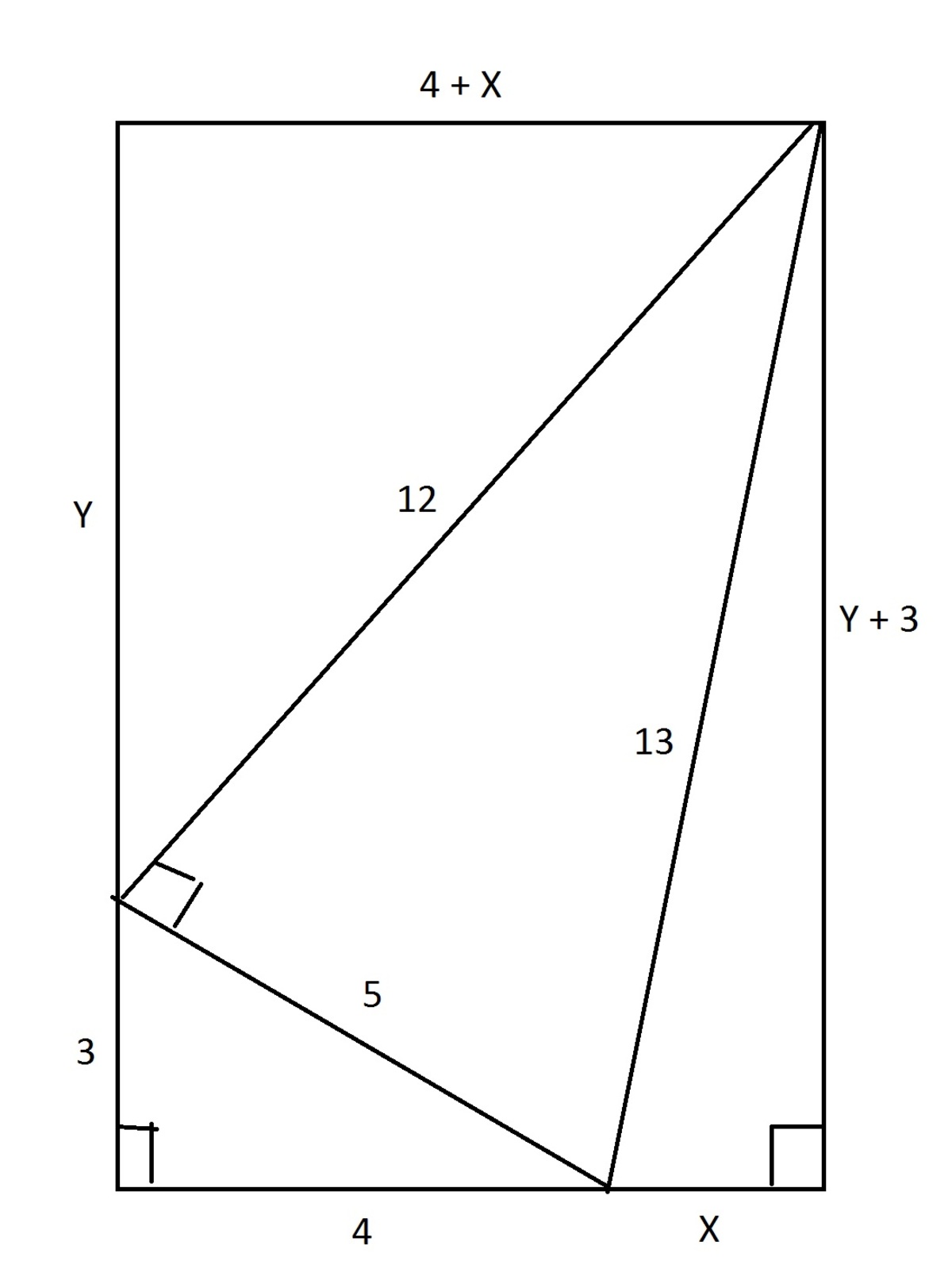Pi and Pythagorean triples
8 π 1 ( sin − 1 ( 5 3 ) + sin − 1 ( 1 3 1 2 ) + sin − 1 ( 6 5 6 3 ) ) = ?
The answer is 0.125.
This section requires Javascript.
You are seeing this because something didn't load right. We suggest you, (a) try
refreshing the page, (b) enabling javascript if it is disabled on your browser and,
finally, (c)
loading the
non-javascript version of this page
. We're sorry about the hassle.
4 solutions
Moderator note:
You have shown that sin ( α + β + γ ) = 0 , but does that mean that α + β + γ = π only? Why can't it equals to 0 , 2 π , 3 π , 4 π , 5 π , … ?
There's a much simpler approach.
Hint : Construct 3 right triangles side by side.
@Calvin Lin , well, he can bound the sum. Since the range of arcsin ( x ) for positive x is ( 0 , 2 π ] , we have,
α + β + γ ∈ ( 0 , 2 3 π ]
which ensures that α + β + γ = π and not any other integer multiple of π .
Note the inserted image.

From that rectangle, we can derive the following 2 equations: 1) 12^2 - (4+X)^2 = y^2; 2) 13^2 - (Y+3)^2 = X^2. Subtract one from the other to get x = (3Y-16)/4, then sub back into the second equation to get Y = 9.6. So, Y+3 = 12.6 and X=3.2. That means triangle with sides X, Y+3, 13 is similar to triangle with sides 16, 63, 65, since you can just multiply all sides by 5. This shows that the arcsin sum in this problem is a straight line (the bottom of the rectangle), which is 180 degrees, which is pi. So (1/(8 pi)) pi = 1/8 = .125.
Also, arcsin sum approximation of pi on Wikipedia shows that this arcsin sum in this problem has been used to determine the value of pi. So (1/(8 pi)) pi = 1/8 = .125.
That's great and all, but you can't really come up with it without already knowing the answer. In reality this is just lucky guess and check. That said, it's still a very nice looking solution.
The numbers are interesting because they are all parts of triangles made up of Pythagorean triples, which makes the math very easy if you use three acute triangles. The correct answer is 1/8 = 0.125.
a = sin' (3/5) => tan (a) = 3/4
b = sin' (12/13) => tan (b) = 12/5
c = sin' (63/65) => tan (c) = 63/16
Using tan (x+y) = (tan (x) + tan (y)) / (1 - tan (x) * tan (y)) twice...
tan (a+b) = (3/4 + 12/5) / (1 - 3/4 * 12/5) = -63/16
tan ((a+b)+c) = (-63/16 + 63/16) / (1 + 63/16 * 63/16) = 0
a+b+c = tan' (0)
Since all three angles are acute, a+b+c = pi.
So (1 / (8 * pi)) * (a+b+c) = 0.125
Let α = sin − 1 5 3 , β = sin − 1 1 3 1 2 and γ = sin − 1 6 5 6 3 .
⇒ ⎩ ⎪ ⎪ ⎪ ⎪ ⎨ ⎪ ⎪ ⎪ ⎪ ⎧ sin α = 5 3 sin β = 1 3 1 2 sin γ = 6 5 6 3 cos α = 5 4 cos β = 1 3 5 cos γ = 6 5 1 6
Now we have:
sin ( α + β + γ ) = sin ( α + β ) cos γ + cos ( α + β ) sin γ = 6 5 1 6 ( sin α cos β + cos α sin β ) + 6 5 6 3 ( cos α cos β − sin α sin β ) = 6 5 1 6 ( 5 3 × 1 3 5 + 5 4 × 1 3 1 2 ) + 6 5 6 3 ( 5 4 × 1 3 5 − 5 3 × 1 3 1 2 ) = 6 5 1 6 ( 6 5 6 3 ) − 6 5 6 3 ( 6 5 1 6 ) = 0
⇒ α + β + γ = π ⇒ sin − 1 5 3 + sin − 1 1 3 1 2 + sin − 1 6 5 6 3 = π ⇒ 8 π 1 ( sin − 1 5 3 + sin − 1 1 3 1 2 + sin − 1 6 5 6 3 ) = 8 π 1 × π = 8 1 = 0 . 1 2 5